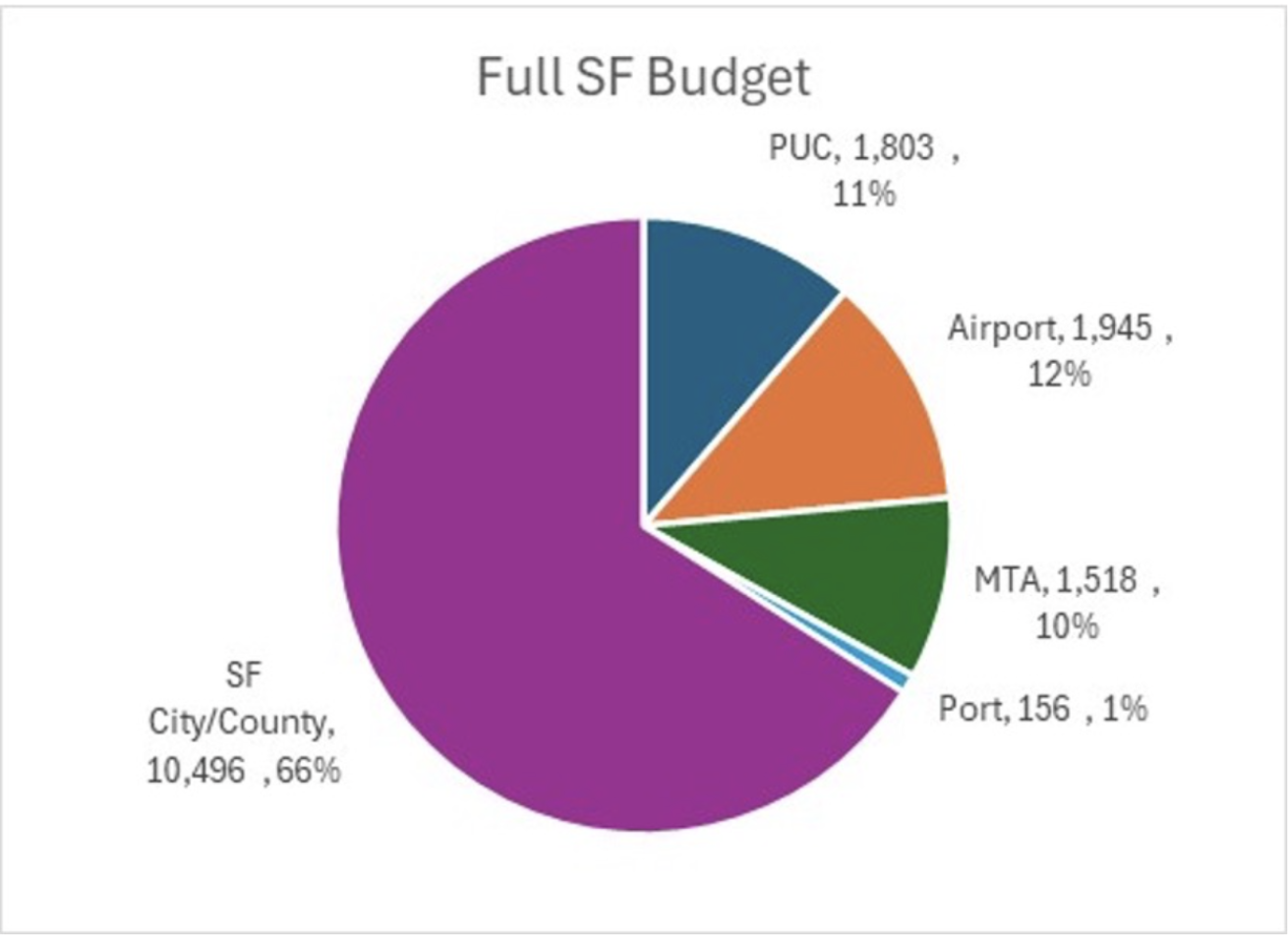San Francisco’s budget: Understanding the full picture
Part 8 of a 13-part series: Beyond the General Fund
To understand the full magnitude of San Francisco’s fiscal challenges, we now need to step back and look at the entire budget — not just the city/county part.
Let’s start by defining the key components.
San Francisco’s total budget includes both enterprise departments and what we have been calling the city/county budget:
— Enterprise departments include the airport (SFO), water utility (PUC), public transit (SFMTA), and the Port of San Francisco. These entities generate all or a large portion of their own revenue through fees, fares, and other charges for service.
— The city/county budget includes the General Fund plus other major revenue sources like some of the other charges for services.
If we want an honest, transparent assessment of San Francisco’s fiscal health, we must look at the entire budget.
Here’s the important point:
While most official discussions center around the General Fund, this provides only a partial view. It excludes large areas of spending that are still within the city’s control and funded by taxpayers. In fact, at least one of the enterprise departments is a significant drag on the General Fund. The SFMTA is currently facing a $322 million deficit on top of the over $500 million already received from the General Fund.
If we want an honest, transparent assessment of San Francisco’s fiscal health, we must look at the entire budget. That’s the full measure of how much money is being spent on behalf of San Franciscans — and the only accurate base for serious reform.
Sources: U.S. Census, California Department of Finance, SFGov.org, Association of Bay Area Governments, San Francisco Chronicle, San Jose Mercury News, San Francisco Examiner, San Francisco Standard. Full cites available on request.
Originally published on The Voice of San Francisco on May 15, 2025 by Marie Hurabiell

